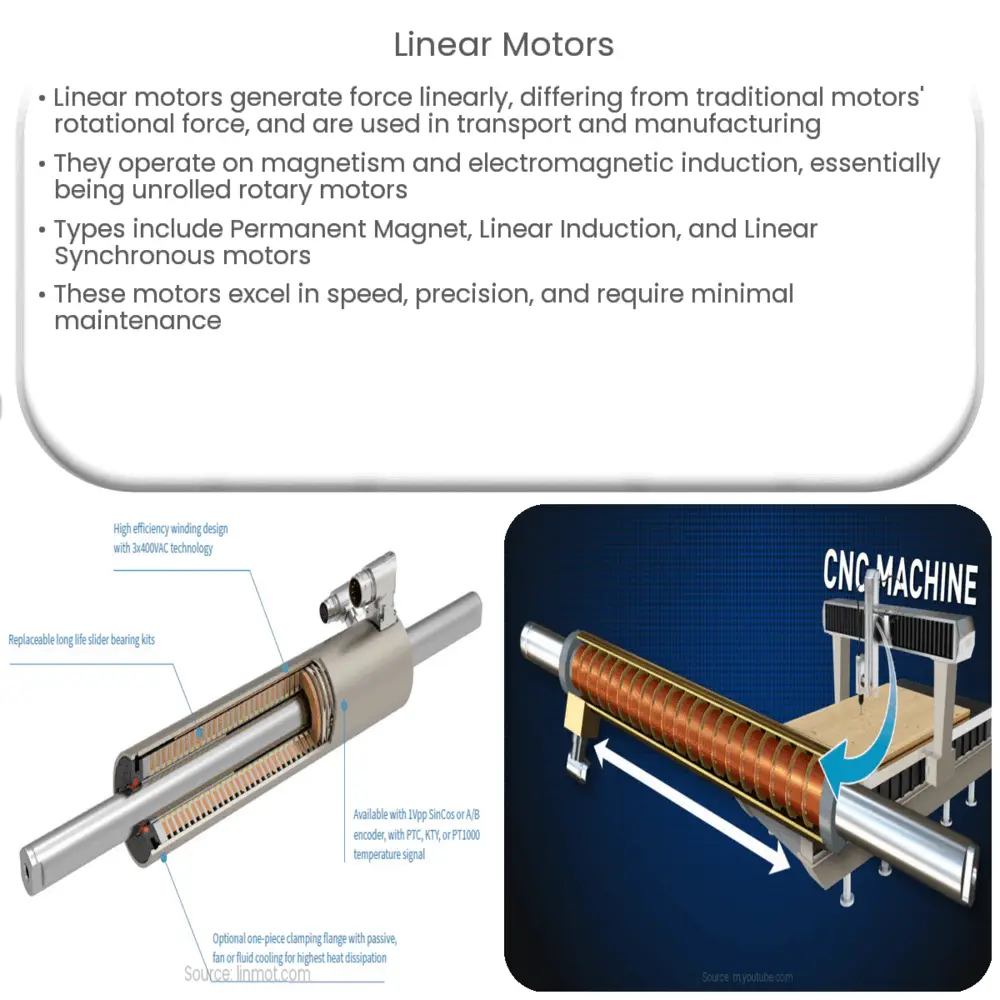Explore the world of linear motors: their operation, types, applications, and benefits in industries from transportation to medicine.

Introduction to Linear Motors
A linear motor is a type of electric motor that generates force in a linear direction, as opposed to the rotational force generated by traditional electric motors. This transformative technology has diverse applications, ranging from transportation systems to manufacturing processes.
Principles of Operation
Linear motors work on the principles of magnetism and electromagnetic induction. The fundamental concept is based on the fact that a current-carrying conductor placed in a magnetic field experiences a force. In essence, a linear motor can be thought of as an unrolled rotary motor where instead of producing torque (rotational force), it produces linear force.
Components of Linear Motors
The main components of a linear motor are the stator (the stationary part) and the slider (the moving part). The stator generates a magnetic field, while the slider contains a coil that moves within this field. By alternating the direction of the current in the coil, the slider can be made to move back and forth along the stator.
Types of Linear Motors
- Permanent Magnet Linear Motors: This type of linear motor uses permanent magnets for the stator and a coil of wire as the slider. The direction of motion is changed by reversing the direction of the current in the coil.
- Linear Induction Motors: In these motors, the stator is a coil of wire, and the slider is a metal plate. Changing the current in the stator coil induces a current in the slider, causing it to move.
- Linear Synchronous Motors: In a linear synchronous motor, the stator generates a moving magnetic field that ‘drags’ the slider along with it. The speed and direction of motion are controlled by changing the frequency and phase of the current in the stator.
In the next section, we will delve deeper into the applications and advantages of these extraordinary machines.
Applications of Linear Motors
Linear motors are renowned for their wide-ranging applications across various industries. These include:
- Transportation: Linear motors are the driving force behind maglev (magnetic levitation) trains, which float above the tracks and are propelled forward by these motors. This technology results in a smooth, fast, and efficient mode of transport.
- Manufacturing: In automated manufacturing processes, linear motors provide precise and rapid movement for tasks such as product sorting and assembly line positioning.
- Medical: In medical technology, linear motors are used in devices such as MRI machines and precision surgical robots.
Advantages of Linear Motors
The use of linear motors offers several advantages:
- High Speed and Acceleration: Linear motors can achieve high speeds and accelerations, making them ideal for high-speed transportation and manufacturing processes.
- High Precision: These motors allow for extremely precise motion control, which is essential in sectors like medicine and micro-manufacturing.
- Low Maintenance: As they have fewer moving parts and no physical contact between the stator and slider, linear motors require less maintenance compared to traditional motors.
Conclusion
In conclusion, linear motors represent a significant leap in motor technology. Their ability to convert electrical energy directly into linear motion has opened up a realm of possibilities in various industries. From propelling high-speed trains to enabling precision in medical technology, the impact of linear motors is widespread and transformative. As we continue to innovate and refine this technology, we can anticipate even greater advancements and applications in the future.


